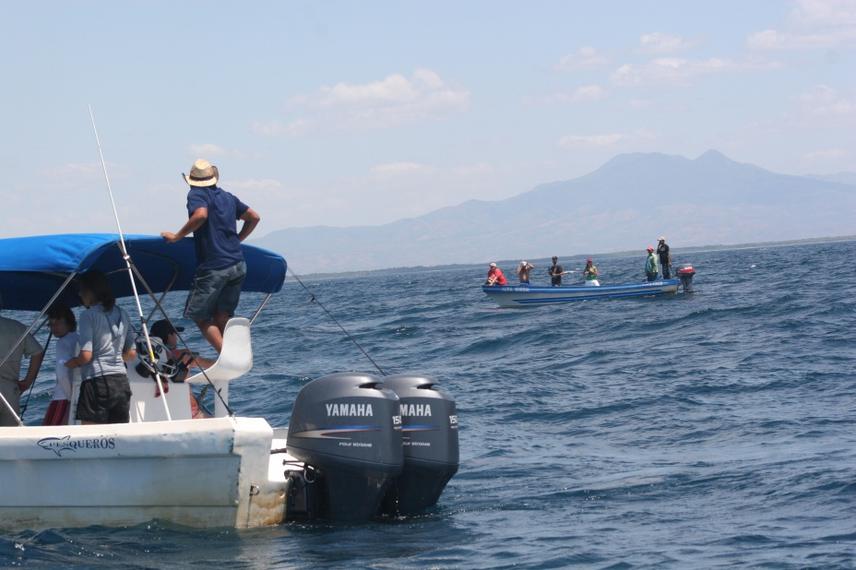Ester Quintana-Rizzo
This project conducts the first identification of singing areas and song structure of humpback whales off the Guatemalan Pacific coast.

Two whale watching boats following a mother and calf humpback whale at a distance of approximately 50 m.
It is increasingly acknowledged that cetacean-based tourism may not be as low in impact as it is sometimes presumed. In Latin America, this industry has shown a strong, steady growth at a rate that is three times the rate of world tourism.
In Guatemala, humpback whales (Megaptera novaeangliae) are the focus of an unregulated whale watch industry. This is of concern at multiple levels because the nature of cetacean-focused tourism is such that whale-watching boats repeatedly concentrate in areas where they are more likely to find animals. This could potentially be a detrimental for animals if there is a repeated disruption to breeding, social, feeding, or resting behaviours. A straightforward impact of unregulated activities is the increased likelihood of vessel strikes and disruption of whale behaviour. Less obvious risks include an impact on breeding activities. The low frequency sound emitted by boats can interfere with the low frequency sound of the whale’s song.
Since whale song plays a crucial part in breeding, low frequency sound interference can impact breeding. Therefore, the identification of singing areas can be used to identify critical locations for the whales where boat traffic should be restricted. In this study, I will conduct the first identification of singing areas and song structure of humpback whales in the Pacific coast of Guatemala. Humpback whales concentrate in Central America as part of their long seasonal migrations from high-latitude feeding grounds. The acoustic features of songs produced by males in Central America remain unknown.
Boat surveys will be conducted to identify where singing occurs along a 150-km stretch of southern Guatemala. Song structure will be analysed and compared between whales. The identification of singing areas will be used to identify critical zones that could benefit from special protections, particularly as a result of increased human activity including whale watching.